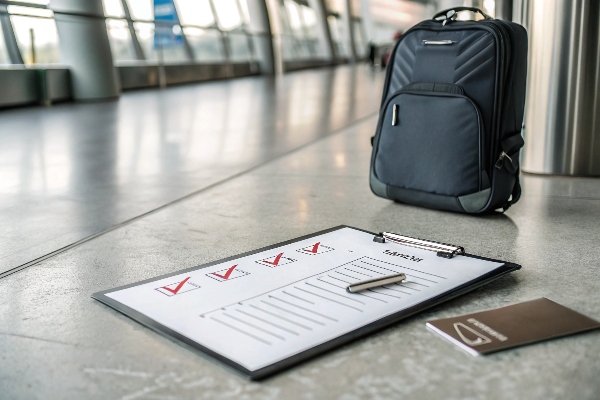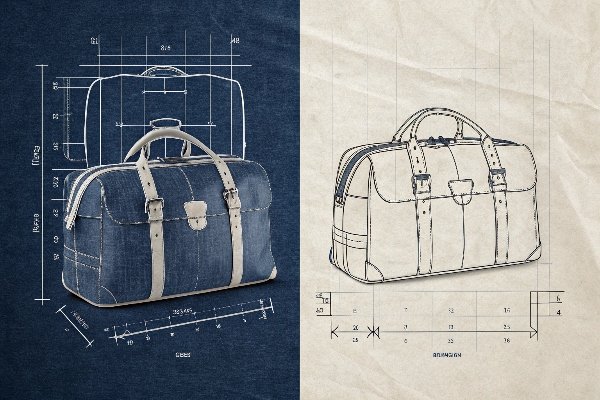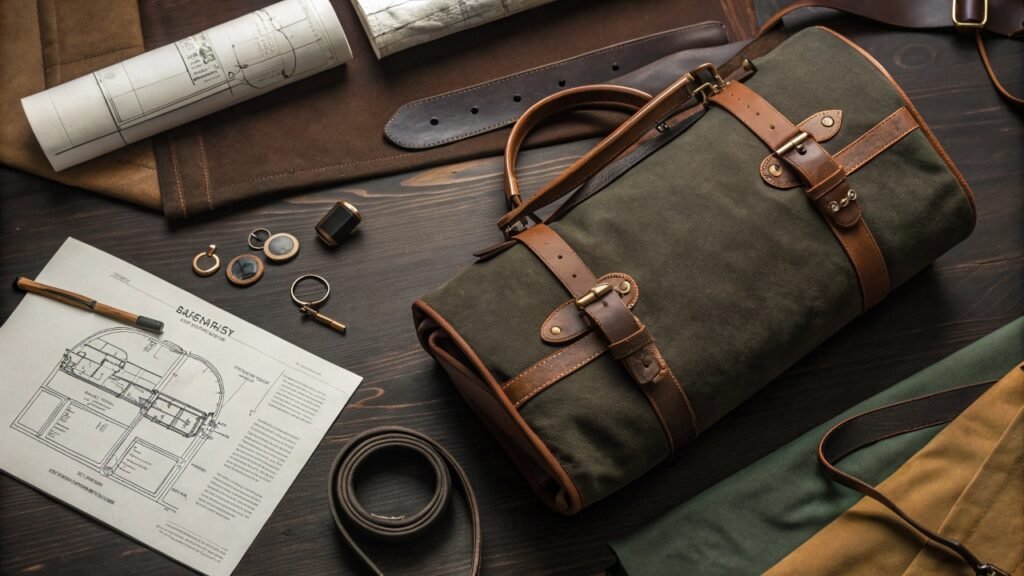Choosing the wrong travel bag manufacturer leads to production delays, poor quality bags, and lost profits. This can damage your brand's reputation and waste your entire investment.
To choose the right travel bag manufacturer, you must evaluate them against a checklist covering production capabilities, quality control systems, communication speed, and overall value—not just the initial price quote.

Since I started my bag manufacturing journey back in 2005, I’ve seen this decision make or break dozens of brands. A good supplier just follows orders. A great partner becomes an extension of your team, helping you solve problems and build a better product. The difference is knowing what to look for and what to ask. Over the years, I've seen that the most successful brand partnerships are built on a foundation of trust and transparency, which only comes from a thorough evaluation. So, I’ve put together a checklist of the critical questions you should be asking.
Is an OEM or ODM Partnership Model Right for Your Business?
You have a great idea for a new travel bag line, but you're unsure how to start the production process. Choosing the wrong manufacturing model can create unexpected design work or limit your creative input.
Choose OEM (Original Equipment Manufacturer) if you have a complete, production-ready design and just need a factory to make it. Choose ODM (Original Design Manufacturer) if you need a partner to help develop your concept into a finished product.

This is one of the first and most important decisions you'll make. It defines the entire relationship with your manufacturer. An OEM partnership is straightforward: you provide the "recipe," and the factory "cooks" it for you. This gives you total creative control. An ODM partnership is more collaborative. You bring an idea, and the manufacturer uses their experience, existing designs, and technical expertise to help you build the product. This is ideal for new brands or companies looking to expand their line quickly without a large in-house design team. We offer both models because we know every brand's needs are different. Our Guangzhou R&D center is equipped to either execute your exact vision (OEM) or work with you to create something entirely new (ODM).
Comparing the Partnership Models
| Factor | OEM (Your Design) | ODM (Their Design Expertise) |
|---|---|---|
| Your Input | Provide detailed technical specifications and patterns. | Provide a concept, market needs, and brand direction. |
| Intellectual Property | You own the design entirely. | Design ownership is often shared or licensed. |
| Speed to Market | Depends on your design readiness. | Often faster, as they adapt existing successful molds/patterns. |
| Best For | Established brands with in-house design teams. | New brands, e-commerce sellers, and retailers. |
What are the 10 Critical Questions to Ask a Potential Bag Supplier?
You're talking to potential suppliers, but you feel like you're not getting the full picture. You need to know exactly what to ask to uncover their true capabilities and reliability.
Before signing anything, you must ask about their quality control certifications, production capacity, lead times for samples and bulk orders, communication process, and policies for handling production errors. These answers reveal their professionalism.

A supplier's website and initial sales pitch will always sound perfect. The real test comes when you start asking specific, operational questions. These questions are designed to cut through the marketing and get to the core of how they do business. Their answers (or lack thereof) will tell you everything you need to know about what it would be like to work with them. For example, when a client asks us about our quality control, we don't just say "it's good." We show them our ISO 9001 certification. When they ask about speed, we commit to our 24-hour technical patterning and 48-hour sample turnaround. Clear, confident answers to these questions are a sign of a reliable partner.
Your Pre-Contract Checklist:
- What quality certifications do you hold (e.g., ISO 9001)?
- What is your monthly production capacity?
- What is your standard lead time for a sample? For a bulk order?
- Can I see examples of travel bags you've made for other brands?
- Who will be my main point of contact, and how do we communicate?
- What is your process for quality inspections?
- How do you handle production errors or defective units?
- What are your payment terms and Minimum Order Quantity (MOQ)?
- Can you describe your supply chain for raw materials?
- Do you have manufacturing facilities in more than one country to manage risk?
Why Isn't the Cheapest Manufacturer Always the Best Value?
You've received several quotes, and one is significantly cheaper than the others. It's tempting to go with the lowest price, but you're worried there might be hidden risks or costs.
The cheapest price often hides costs in poor quality, missed deadlines, and communication breakdowns. True value comes from a partner whose reliability, speed, and quality control save you money in the long run by protecting your brand's reputation.

This is the biggest trap I see brands fall into. A low unit price is attractive, but it can quickly become your most expensive mistake. A manufacturer might offer a low price because they use substandard materials that fall apart after a few uses, leading to angry customers and costly returns. They might be cheap because their factory is poorly managed, causing production delays that make you miss your key selling season. True cost, or total value, includes the unit price plus the cost of any potential problems. This is why we focus on cost leadership, not just being the cheapest. Our transparent cost structure, which saves brands 15-25%, is achieved through efficiency—our global procurement and multi-location manufacturing—not by cutting corners on quality. A reliable partner who delivers on time, every time, provides far greater value than a cheap supplier who puts your business at risk. You can learn more about our approach on our About Us page.
Conclusion
Choosing the right manufacturer is the most critical decision for your brand. Use this checklist to find a true partner who offers not just a price, but unbeatable value and reliability.

